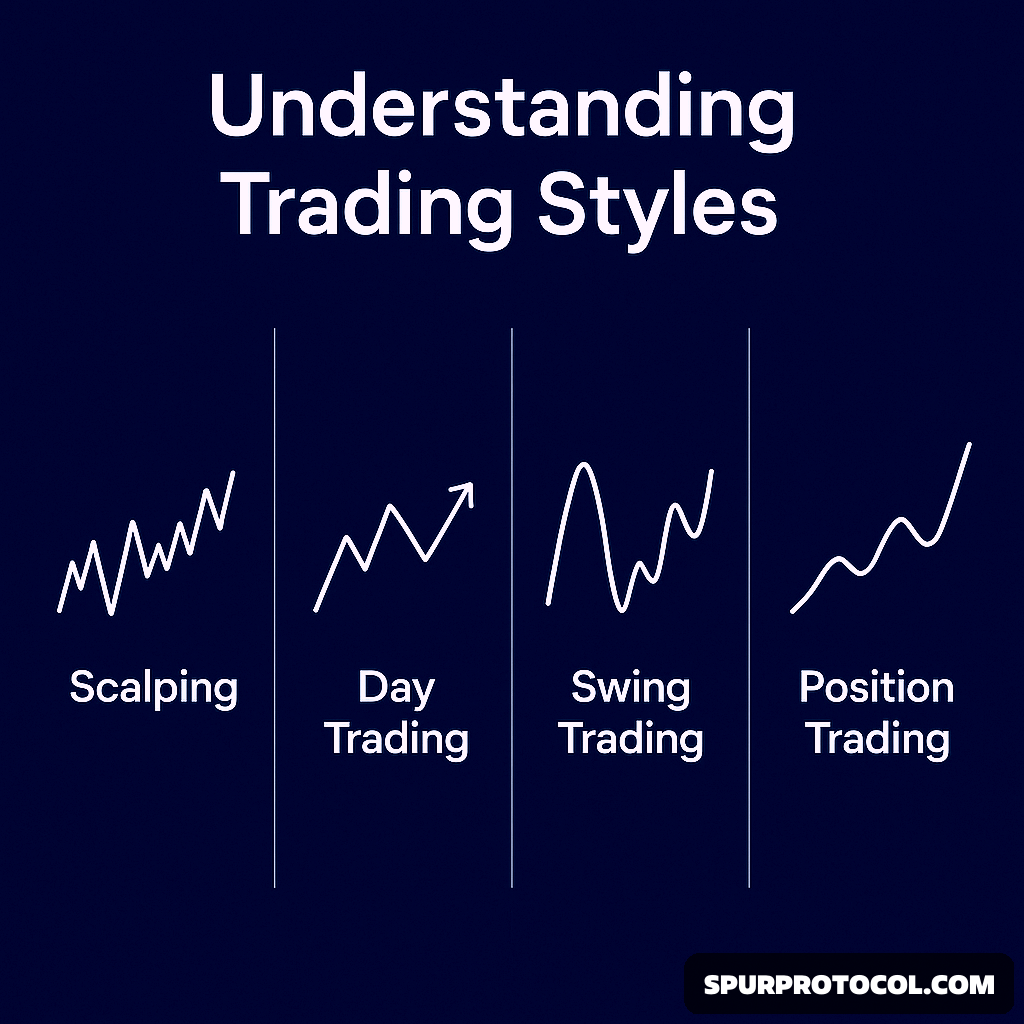Understanding Trading Styles
In trading, there are different styles people use depending on how much time they have, how much risk they can handle, and their personality. Some traders like quick in-and-out moves, while others prefer to hold for days, weeks, or even years. Choosing the right style is important because not every method fits everyone. Below are examples of each style and who it’s best suited for.
Go Back

🕒 11:21 PM
📅 May 01, 2025
✍️ By BillionaireHighPriest
1. Scalping
Scalping is a fast-paced trading style where people try to make small profits over and over again by buying and selling within seconds or minutes. Scalpers can place dozens or even hundreds of trades in a day, aiming to catch tiny price changes. This style is for people who love action and can make decisions in a split second. It works best for those who can sit glued to the screen for hours, stay super focused, and stay cool even when things get intense. If you get stressed easily or prefer slower moves, this one might not be for you.
2. Day Trading
Day trading means buying and selling within the same day, making sure you close all your trades before the day ends. Day traders watch price movements closely during the day and try to profit from them, whether it's stocks, crypto, or forex. This style is good for people who have free time and can handle the pressure of quick decisions. It fits those who want to avoid the risk of holding trades overnight and are disciplined enough to follow a plan without letting emotions take over.
3. Swing Trading
Swing trading is about holding trades for a few days or even a couple of weeks, trying to catch bigger moves in the market. Swing traders aren’t glued to the screen all day but check the markets regularly to spot opportunities. This style is perfect for people who have other jobs or responsibilities but still want to trade actively. It suits those who have some patience, can handle seeing prices go up and down daily, and don’t panic easily when things swing against them for a bit.
4. Position Trading
Position trading is more of a long-term game. Here, traders hold their positions for months or even years, focusing on big trends rather than daily ups and downs. It’s closer to investing than regular trading. This method is for people who are patient and calm, not bothered by short-term price drops, and believe in the bigger picture. It’s great for those who don’t have time to watch the markets every day and prefer to let their trades grow slowly over time.
5. Algorithmic Trading
Algorithmic trading (or algo trading) is when you use a computer program or bot to make trades for you automatically, based on rules you set. The system can trade faster and more often than a human ever could. This style is great for people who are into tech and coding and want to let software handle the trading. It’s ideal for those who prefer numbers and logic over emotions and don’t want to stress about making every trading decision manually.
6. High-Frequency Trading (HFT)
High-Frequency Trading is like algo trading but on steroids. It’s about using powerful computers to make thousands of trades in a split second to profit from tiny price differences. This is not something regular people do. It’s mostly for big banks and trading firms with expensive technology. It suits large companies that have deep pockets and the tools to compete at that lightning-fast level.
7. News-Based or Event Trading
News-based trading is about reacting quickly to things like economic reports, company earnings, or breaking news that can move the market. Traders who use this style jump in when they expect big price moves after such events. It works well for people who stay updated with news, think fast on their feet, and don’t mind dealing with sudden price jumps. If you like being in the know and can handle a bit of chaos, this style might suit you.
8. Trend Following
Trend following is a simple idea. You find a market that's moving steadily in one direction (up or down) and stick with it until it shows signs of reversing. Instead of trying to predict every small move, you just ride the wave. This style is good for patient people who can stay disciplined and not get shaken out by small price dips. It’s for those who prefer to catch big moves over weeks or months rather than stress about daily changes.
At the end of the day, there’s no one-size-fits-all when it comes to trading styles. What works for one person might not suit another. The key is to pick a style that matches your personality, your schedule, and how much risk you’re comfortable with. Some people love the fast action of scalping or day trading, while others prefer the patience and calm of swing or position trading. Take time to try out different styles and see what feels right for you. Once you find your fit, stick to it, stay disciplined, and keep learning as you go.
